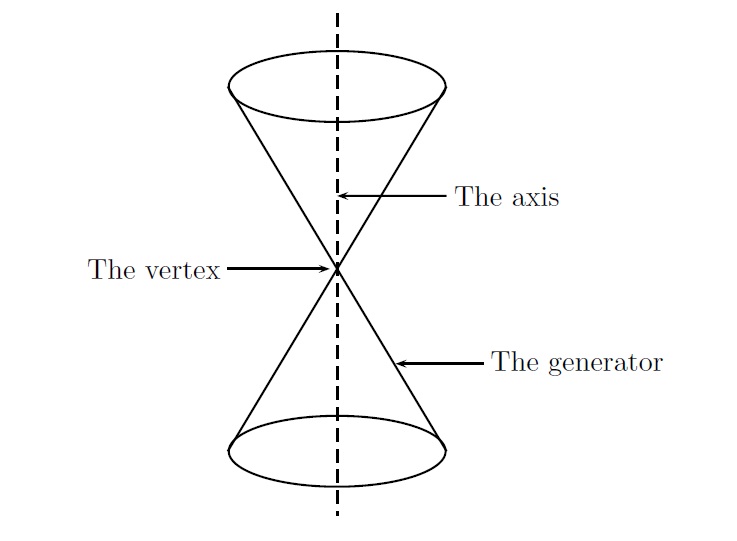Overview:
A hyperbola is a conic section that is formed when a plane intersects a double cone, so that it forms two identical curves that go in opposite directions. It has two separate foci and the two branches are mirror images of each other.
What Is a Hyperbola?
The two branches of the hyperbola have a transverse axis that bisects them along a line of symmetry and a conjugate axis that is perpendicular to them. The branches mirror each other exactly. Suppose that one branch of the hyperbola has a vertex at (0, 4). The other branch of the hyperbola will have a vertex at (0, -4). Another feature of both branches of the hyperbola is that the sides of each branch come very close to extended diagonal lines, but never quite touch them.
What Is The Equation for a Hyperbola?
Using the Distance Formula, if the foci are at (0, 5) for the “positive” hyperbola and (0, -5) for its “negative” mirror image, the equation that describes its location on the plane is 9y2 – 16x2 = 144. The equation for a hyperbola can also be written as y2/a2 – x2/b2 when the foci are at coordinates (0, c), and (0, -c). This is a special type of second-degree equation that has 2 separate squared variables.
What Is a Rectangular Hyperbola?
A rectangular hyperbola is a special type of hyperbola where the asymptotes are the x and y axes. It is defined by an equation of the form xy = k, where k is a constant. (This is also the form for inverse variation, but only one of the branches is usually meaningful.) If k is greater than 0, then one branch of the hyperbola will have positive coordinates and the other branch will have negative coordinates, but if k is less than 0 then the values will be reversed.
What Are Real-World Examples of Hyperbolas?
One of the earliest real-world examples of hyperbolas was the path of light traced on a sundial. It was studied in ancient Greece, who first noticed the relationship between the shape of the hyperbola and the angle of the sun’s rays at a given time of year. Because hyperbolas have constant differences, they are often used to solve problems in navigation and with LORAN and GPS transmitters. High-energy atomic particles also follow a hyperbolic path.
Interested in geometry tutoring services? Learn more about how we are assisting thousands of students each academic year.
SchoolTutoring Academy is the premier educational services company for K-12 and college students. We offer tutoring programs for students in K-12, AP classes, and college. To learn more about how we help parents and students in Lawrence, IN: visit Tutoring in Lawrence, IN



